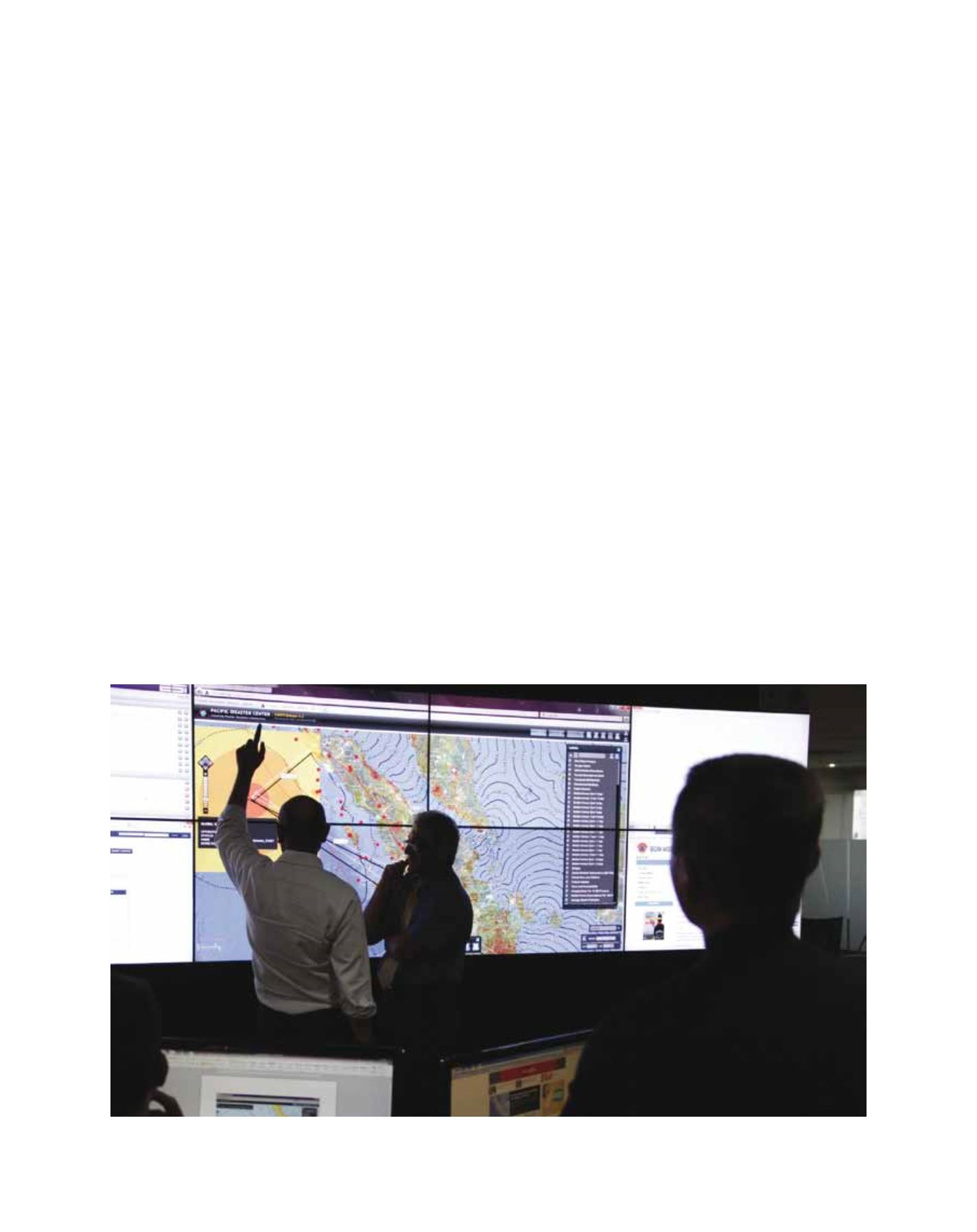

[
] 211
U
rban
I
ssues
• Disadvantaged urban populations, which are
impacted most due to:
– Greater exposure to disasters in less desirable areas
and, often, unplanned and poorly constructed
housing
– Limited access to infrastructure generally and
disaster-reducing infrastructure specifically
– Less adaptive capacity in terms of wealth,
education etc.
– Limited capacity to improve their situation by
moving to less dangerous areas.
5
These factors are compounded by the fact that the areas
inhabited by the urban poor commonly have the highest
population density, meaning that even modest disasters
affect greater numbers of individuals.
Global urban development is spatially and temporally
a highly complex, evolving process that is made more
difficult by the risk-multiplying aspect of the process
itself. However, there are positive attributes of urbaniza-
tion that compensate somewhat for the risk uncertainty:
• Urban areas are normally the economic centres of
nations and, as such, have access to the resources
and expertise required to more effectively deal with
emerging issues of climate change
• Through appropriate ‘green’ planning and
development, enterprises, vehicles and populations,
GHG emissions can be reduced and more disaster-
resilient communities developed
• Urban areas are centres of innovation where new
and diverse types of planning, programmes and
Increasingly, the focus of climate research is being directed
toward the development of strategies and tools for adaptation.
This is a necessary and effective means of addressing unavoidable
climate change impacts. Given the broad range of potential climate
impacts and the ways in which these may affect populations and
natural systems, adaptation strategies and tools must work across a
variety of systems and they must be appropriate to the conditions
and culture of individual urban areas that present complex sets of
climate change related impacts.
Evolving urban disaster risk
Urban disaster risk assessment, management and planning is
particularly challenging because sufficiently detailed science-based
assessments of the spatial and temporal impacts of climate change
are needed, and because the urban environment is inherently risk-
multiplying.
4
Overall, urban environments are risk-multiplying
largely because they increase both exposure and the vulnerability of
their populations as a result of:
• Increasing/larger concentration of people at risk
• Rapid spatial expansion of urban areas beyond physical and
social support infrastructure, stressing available resources
• Increasingly complex development with an admixture of urban,
slum, industrial and agricultural areas
• Ecosystem and biodiversity ‘services’ impacts that reduce
mitigation capacities and the overlapping impact of climate
change that can increase:
– Urban-induced microclimatic changes (heat island effect,
micro-droughts)
– Shifts from ‘traditional’ disasters to more complex, synergistic
and cascading disasters
– Traditional and newly emerging infectious diseases.
PDC Executive Director Ray Shirkhodai with disaster managers using DisasterAWARE to view the travel times of a tsunami
Image: PDC
















